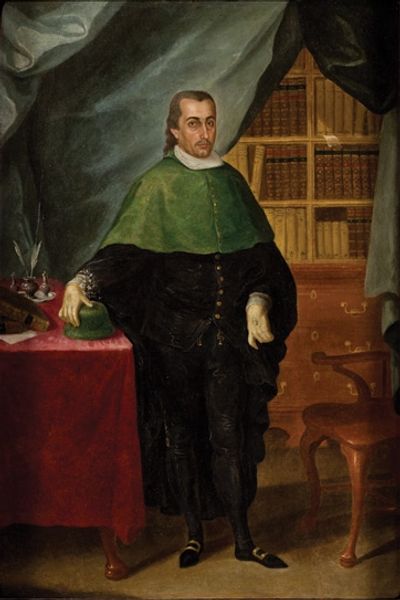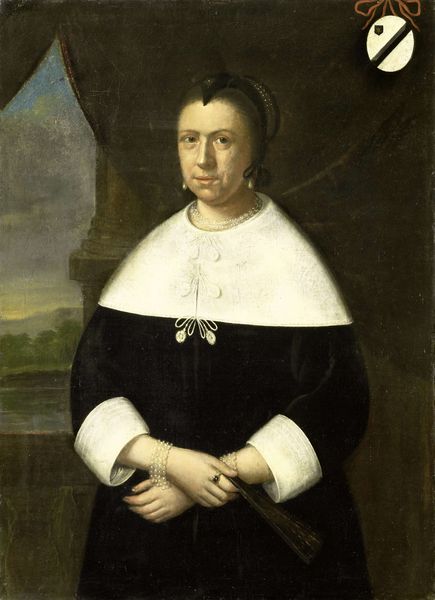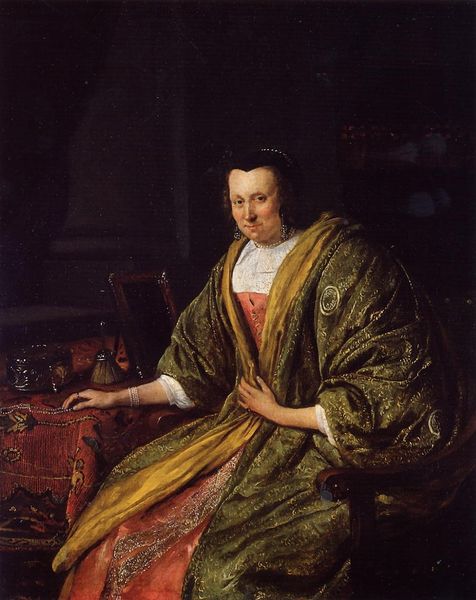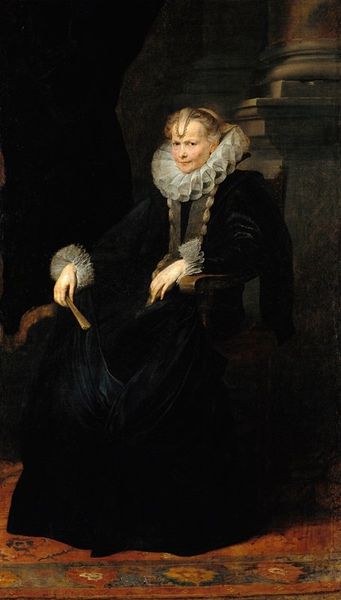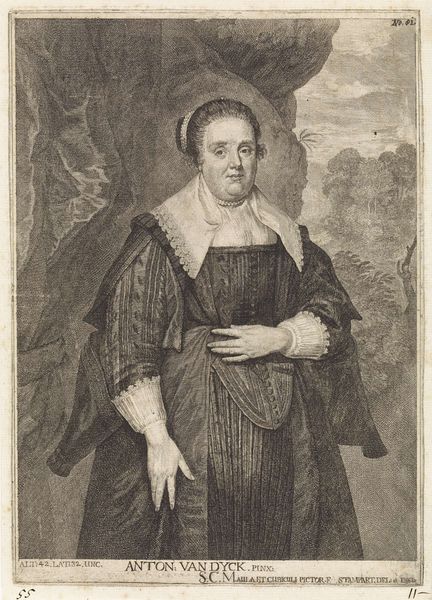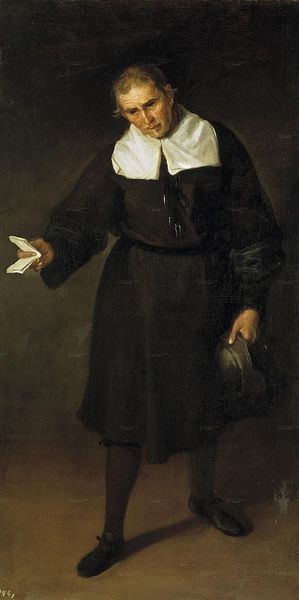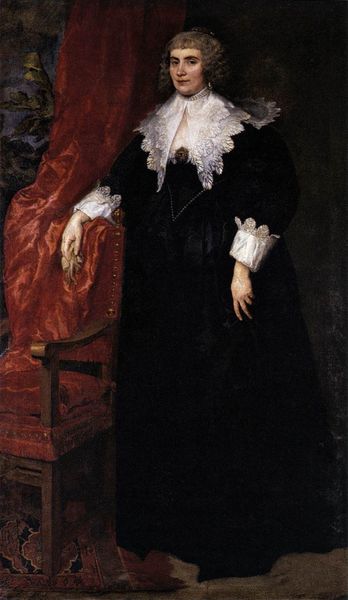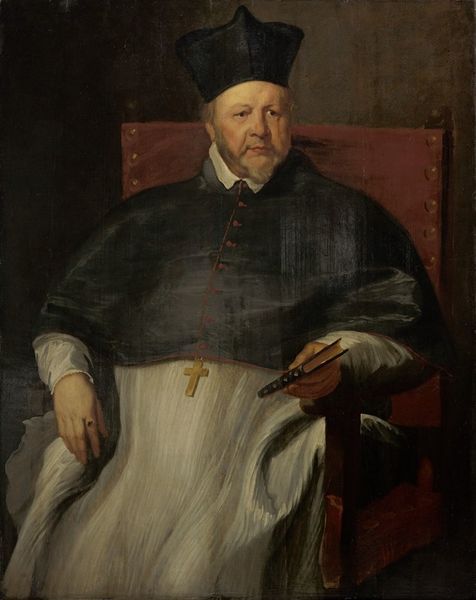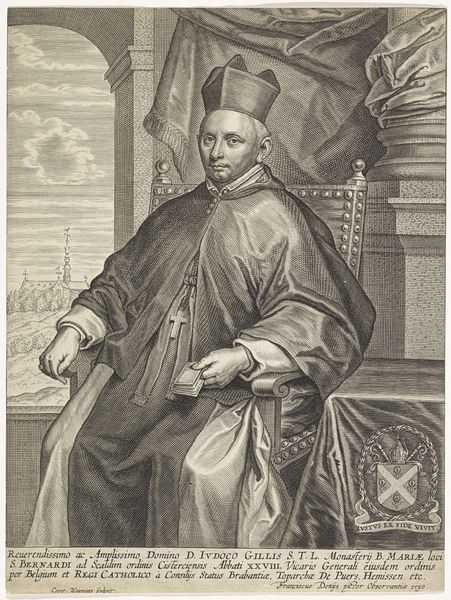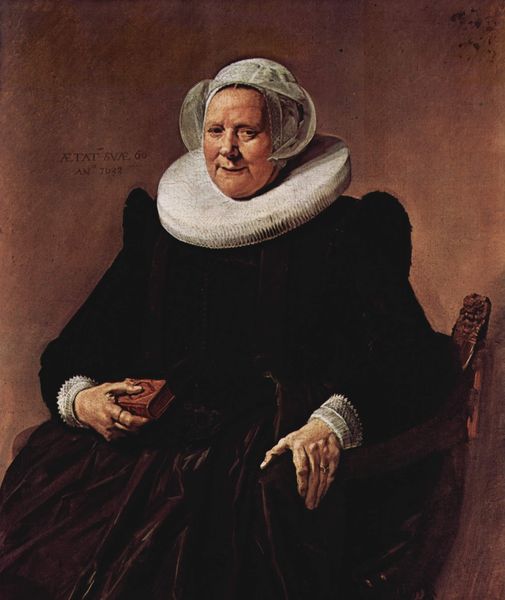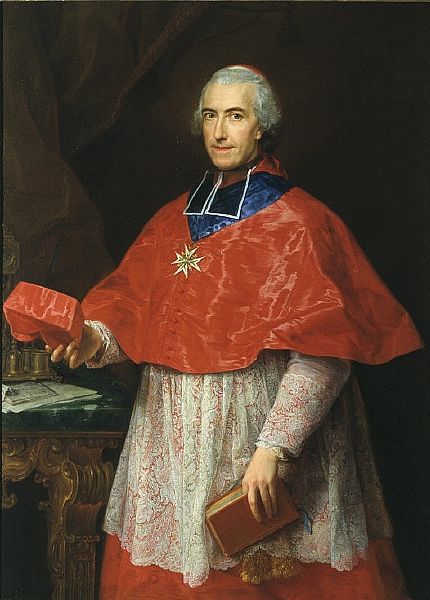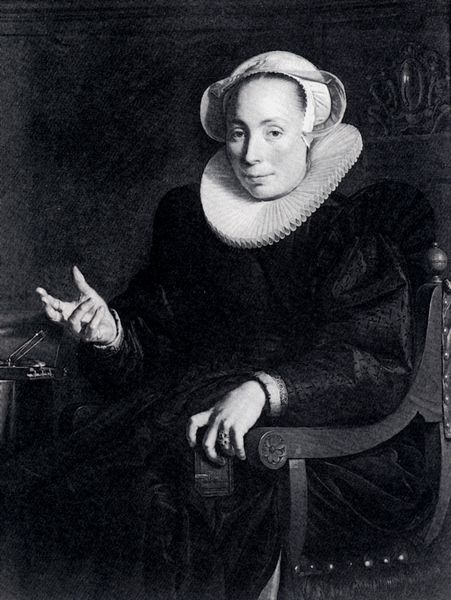
Portrait of Bishop Benedetto Ganassoni 1774
0:00
0:00
pietrolonghi
Ca' Rezzonico (Museo del Settecento), Venice, Italy
Dimensions: 26 x 42 cm
Copyright: Public domain
Curator: Before us is Pietro Longhi's 1774 oil-on-canvas, a Baroque-style portrait of Bishop Benedetto Ganassoni, currently housed in Ca' Rezzonico, Venice. Editor: Oh, hello there, Your Eminence. Immediately, I'm struck by how… muted it is. Subdued pomp and circumstance. Is it just me, or is this portrait whispering rather than booming? Curator: Longhi, although working within established conventions, often incorporated elements of genre painting into his portraits. Notice how Ganassoni isn’t idealized? There's an honesty, a directness in his gaze, that counters the typical Baroque glorification. Editor: Right. He's not trying too hard, is he? That lace, though! Exquisite and delicate! The artist definitely paid a good deal of attention to detail. There is also this propish almost medieval vibe to it with the big metal cross in the back that doesn't let you forget about his status. Curator: Absolutely. The lace reflects the sitter's status and wealth. It also gives insight into the labor that produced these fineries. Longhi subtly includes critiques of social mores in his artworks, examining the public personas of the privileged. His choice to juxtapose this display of material with what you mentioned, his muted expression, seems to be making a commentary on the church's place and its representative in society. Editor: Maybe I’m reading too much into it, but there's this gentle weariness in his eyes. I imagine he's thinking of how many fish and loaves are on his dinner menu that night. Perhaps I can see the weight of responsibility sitting heavy. Curator: The portrait tells us of Baroque artistic expression in Venice but is also an exercise of political interpretation. Ganassoni was appointed Bishop by Pope Clement XIV, and the painting celebrates the importance of this figure inside Venetian society. It marks a historical time, just before Venice's end of independence and absorption into Austrian, Napoleonic, and Italian dominion. Editor: I love how we started with a simple portrait and wandered through social critique, high fashion, and geopolitical turbulence. It shows you how much an image can reflect, really. Curator: Indeed. I'm glad we’ve had this moment to shed some light on these more discrete meanings together.
Comments
No comments
Be the first to comment and join the conversation on the ultimate creative platform.

